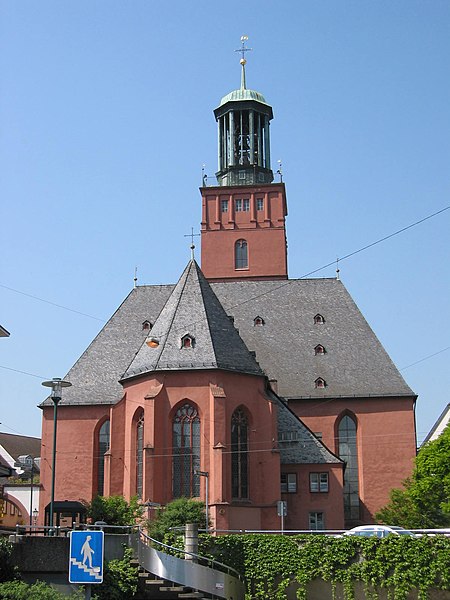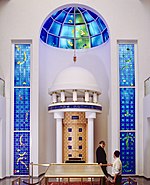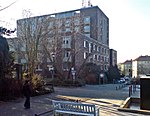Darmstadt (German: [ˈdaʁmʃtat] ) is a city in the state of Hesse in Germany, located in the southern part of the Rhine-Main-Area (Frankfurt Metropolitan Region). Darmstadt has around 160,000 inhabitants, making it the fourth largest city in the state of Hesse after Frankfurt am Main, Wiesbaden, and Kassel.
Darmstadt holds the official title "City of Science" (German: Wissenschaftsstadt) as it is a major centre of scientific institutions, universities, and high-technology companies. The European Organisation for the Exploitation of Meteorological Satellites (EUMETSAT) and the European Space Operations Centre (ESOC) are located in Darmstadt, as well as GSI Centre for Heavy Ion Research, where several chemical elements such as bohrium (1981), meitnerium (1982), hassium (1984), darmstadtium (1994), roentgenium (1994), and copernicium (1996) were discovered. The existence of the following elements was also confirmed at GSI Centre for Heavy Ion Research: nihonium (2012), flerovium (2009), moscovium (2012), livermorium (2010), and tennessine (2012). The Facility for Antiproton and Ion Research (FAIR) is an international accelerator facility under construction. Darmstadt is also the seat of the world's oldest pharmaceutical company, Merck, which is the city's largest employer.
The Mathildenhöhe, including the Darmstadt artists' colony, a major centre of the Jugendstil artistic movement, referring both to the group of artists active in the city in the late 19th and early 20th century, as well as the buildings which they designed, together with the Russian Chapel in Darmstadt, was recognized as a World Heritage Site by UNESCO in 2021.Darmstadt was formerly the capital of a sovereign country, the Grand Duchy of Hesse and its successor, the People's State of Hesse, a federal state of Germany. As the capital of an increasingly prosperous duchy, the city gained some international prominence and remains one of the wealthiest cities in Europe. In the 20th century, industry (especially chemicals), as well as large science and electronics (and later, information technology) sectors became increasingly important, and are still a major part of the city's economy. It is also home to the football club SV Darmstadt 98. Alexandra Feodorovna (Alix of Hesse), the wife of Nicholas II of Russia, as well as Maria Alexandrovna (Marie of Hesse), the wife of Alexander II of Russia, who were related, were born in this city.










